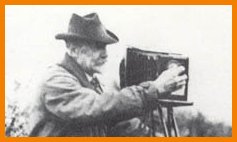
'If you wish to
see it before your own eyes
Have no fixed thoughts either for or against it'
Seng-t'san (d. AD
606)

'If you wish to
see it before your own eyes
Have no fixed thoughts either for or against it'
Seng-t'san (d. AD
606)
Alignment research has blown hot and cold on the fringe of archaeology since
Sir Norman Lockyer published Stonehenge and Other British Stone Monuments
Astronomically Considered in 1906. In it, Lockyer described some alignments
in the vicinity of Stonehenge which had been drawn to his attention by the director
general of the Ordnance Survey. Controversially, he included Salisbury Cathedral
on one of his alignments because he thought it possible that the cathedral occupied
an earlier site.
In 1912, Walter Johnson introduced this line of reasoning to a wider public
in his popular Byways of British Archaeology, which demonstrated the
continuity of religious tradition in Britain with instances of churches built
on pagan sites, many of them within earthworks.
Alfred Watkins took this idea a step further in 1922 when he wrote Early
British Trackways, and in 1925 when he wrote The Old Straight Track
(ISBN 0 349 13704 8) which introduced the concept of leys.

Alfred Watkins
Watkins was a Hereford man, a gentleman amateur who observed that many of the mounds, moats, beacon hills and fords of his native county fell into alignment with each other. Between these points he found castles, churches, mark stones and wayside crosses which he thought might also have occupied prehistoric sites. Watkins surmised that these landmarks were all that remained of a system of tracks once used by prehistoric traders in salt, flint, and (later) metals, who had laid out their routes with staves and marked the way at intervals with stones. Many of these alignments passed through open woodland glades, and because of this Watkins called them leys, a name derived from an old Anglo-Saxon word meaning 'a forest clearing'. Though the original leys were now overgrown and invisible, Watkins maintained they could still be traced by careful mapwork and investigation in the field.
Unfortunately The Old Straight Track had too many inaccuracies and too much speculation for archaeologists to take it seriously. No sensible traveller would have used a track that led straight through forests, bogs, and lakes, so after Watkins died his theory was ignored by the professionals and kept alive only by a few amateurs and Sunday afternoon ramblers.
Half a century later a new generation of enthusiasts were on the scene all fully aware of the shortcomings of leys as trackways. But they were still finding them. Some postulated they were underground water lines which could be detected by means of dowsing rods; some interpreted them as psychic power lines that criss-crossed the countryside radiating from storehouses of spiritual energy; and some claimed they were navigational aids for UFO's.
Ley-lines had been found all over England, were there any in Scotland?
On to the Classification section
Back to the Glasgow Network home page